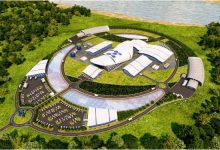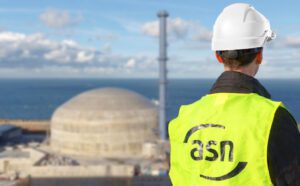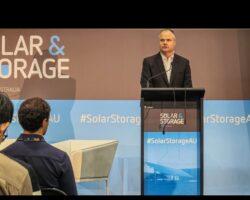Small modular reactors (SMRs) are defined as reactors with a capacity of 300 megawatts (MW) or less. The term ‘modular’ refers to serial factory production of reactor components, which could drive down costs.
By that definition, no SMRs have ever been built and none are being built now. In all likelihood none will ever be built because of the prohibitive cost of setting up factories for mass production of reactor components.
No SMRs have been built, but dozens of small (<300 MW) power reactors have been built in numerous countries, without factory production of reactor components. The history of small reactors is a history of failure.
The US Army built and operated eight small reactors beginning in the 1950s, but they proved unreliable and expensive and the program was shut down in 1977. In addition, 17 small civilian reactors were built in the US in the 1950s and 1960s, but all have since shut down.
Twenty-six small Magnox reactors were built in the UK but all have shut down and no more will be built. The only operating Magnox is a mini-Magnox in North Korea: the design was made public at an Atoms for Peace conference and North Korea uses its 5 MW Magnox to produce plutonium for nuclear weapons.
India’s operates 14 small pressurised heavy water reactors, each with a capacity of about 200 MW. Prof. M.V. Ramana noted in his 2012 book, ‘The Power of Promise: Examining Nuclear Energy in India’, that despite a standardised approach to designing, constructing, and operating these reactors, many suffered cost overruns and lengthy delays. There are no plans to build more of these small reactors in India.
Elsewhere, the history of small reactors is just as underwhelming. This includes three small reactors in Canada (all shut down), six in France (all shut down), and four in Japan (all shut down).
Prof. Ramana concludes his history of small reactors with this downbeat assessment: “Without exception, small reactors cost too much for the little electricity they produced, the result of both their low output and their poor performance.”
Recent history
Just two SMRs are said to be operating — neither meeting the ‘modular’ definition of serial factory production of reactor components. The two SMRs — one each in Russia and China — exhibit familiar problems of massive cost blowouts and multi-year delays.
The construction cost of Russia’s floating nuclear power plant increased six-fold and the OECD’s Nuclear Energy Agency estimates that the electricity it produces costs US$200 (A$306) / megawatt-hour (MWh). The reactor is used to power fossil fuel mining operations in the Arctic.
The other operating SMR (loosely defined) is China’s demonstration 210 MW high-temperature gas-cooled reactor (HTGR). The World Nuclear Association states that the cost of the demonstration HTGR was US$6,000 (A$9,200 billion) per kilowatt, three times higher than early cost estimates and 2-3 times higher than the cost of China’s larger Hualong reactors per kilowatt.
NucNet reported in 2020 that China dropped plans to manufacture 20 HTGRs after levelised cost estimates rose to levels higher than conventional large reactors. Likewise, the World Nuclear Association states that plans for 18 additional HTGRs at the same site as the demonstration HTGR have been “dropped”. China’s demonstration HTGR demonstrates yet again that the economics of small reactors doesn’t stack up.
Three SMRs are under construction – again with the qualification that there’s nothing ‘modular’ about these projects.
Argentina’s CAREM reactor has been a disaster. Construction began in 2014 and the National Atomic Energy Commission now hopes to complete the reactor in 2027 — nearly 50 years after the project was conceived. The cost estimate in 2021 was US$750 million (A$1.1 billion) for a reactor with a capacity of just 32 MW. That’s over one billion Australian dollars for a plant with the capacity of a handful of large wind turbines.
In 2021, China began construction of a 125 MW pressurised water reactor. According to China National Nuclear Corporation, construction costs per kilowatt will be twice the cost of large reactors, and levelised costs will be 50 percent higher than large reactors.
Also in 2021, construction of the 300 MW demonstration lead-cooled BREST fast neutron reactor began in Russia. The cost estimate has more than doubled to 100 billion rubles (A$1.7 billion) and no doubt it will continue to climb.
NuScale and mPower
In 2012, the US Department of Energy (DOE) offered up to US$452 million to cover “the engineering, design, certification and licensing costs for up to two US SMR designs.” The two SMR designs that were selected by the DOE for funding were NuScale Power and Generation mPower.
Taking its cues from the US government, in 2015 the South Australian Nuclear Fuel Cycle Royal Commission commissioned research by WSP Parsons Brinckerhoff (now WSP) on the economic potential of the same two designs.
However NuScale recently abandoned its flagship project in Idaho as RenewEconomy recently reported. NuScale secured subsidies amounting to around US$4 billion (A$6.1 billion) from the US government comprising a US$1.4 billion subsidy from the DOE and an estimated US$30 per megawatt-hour (MWh) subsidy in the Inflation Reduction Act. Despite that government largesse, NuScale didn’t come close to securing sufficient funding to get the project off the ground.
NuScale’s most recent cost estimates were through the roof: US$9.3 billion (A$14.2 billion) for a 462 MW plant comprising six 77 MW reactors. That equates to US$20,100 (A$30,700) per kilowatt and a levelised cost of US$89 (A$135) / MWh. Without the Inflation Reduction Act subsidy of US$30/MWh, the figure would be US$129 (A$196) / MWh. That’s close to WSP’s estimate of A$225 / MWh.
To put those estimates in perspective, the Minerals Council of Australia states that SMRs won’t find a market in Australia unless they can produce power at a cost of A$60-80 / MWh, 2-3 times lower than the WSP and NuScale estimates.
NuScale still hopes to build SMRs but the company is burning cash and, some analysts suggest, heading towards bankruptcy.
Generation mPower — a collaboration between Babcock & Wilcox and Bechtel — was the other SMR design prioritised by the US DOE and the South Australian Royal Commission. mPower was to be a 195 MW pressurised light water reactor.
In 2012, the DOE announced that it would subsidise mPower in a five-year cost-share agreement. The DOE’s contribution would be capped at US$226 million, of which US$111 million was subsequently paid. The following year, Babcock & Wilcox said it intended to sell a majority stake in the joint venture, but was unable to find a buyer.
In 2014, Babcock & Wilcox announced it was sharply reducing investment in mPower to US$15 million annually, citing the inability “to secure significant additional investors or customer engineering, procurement and construction contracts to provide the financial support necessary to develop and deploy mPower reactors”.
The mPower project was abandoned in 2017. The joint venture companies spent more than US$375 million on the project, in addition to the DOE’s US$111 million contribution.
Iceberg Research analysts predicted the collapse of NuScale’s Idaho project, drawing a furious response from NuScale, and later drew the connections between NuScale and mPower:
“[NuScale’s] trajectory bears striking similarities to the B&W mPower project, a joint venture formed in 2010 between Babcock & Wilcox and Bechtel. Like NuScale, mPower was developing a small modular reactor and enjoyed DOE backing. Babcock & Wilcox, mPower’s 90%-shareholder, attempted but failed to sell a majority stake in the project. In a similar vein, NuScale’s largest shareholder Fluor is actively trying to sell around 30% of its equity interest in NuScale.
“There was eventually a significant reduction in funding for mPower. In March 2017, Bechtel withdrew from the joint venture, pointing to the challenges of securing a site and an investor for the first reactor. This led to the termination of the mPower project and Babcock & Wilcox paid Bechtel $30m as settlement.”
NuScale and mPower had everything going for them: large, experienced companies; conventional light-water reactor designs; and generous government subsidies. But they struggled to secure funding other than government subsidies. Needless to say, non-government funding is even more difficult to secure for projects without the backing of large companies, and for projects that envisage construction of unconventional reactors (molten salt reactors, fast neutron reactors, etc.).
NuScale’s failure is particularly striking given the extent of the government subsidies and given that NuScale had progressed further through the licensing process than other SMR designs (which isn’t saying much). Australia’s energy minister Chris Bowen said: “The opposition’s only energy policy is small modular reactors. Today, the most advanced prototype in the US has been cancelled. The LNP’s plan for energy security is just more hot air from Peter Dutton.”
Other failures
Many other plans to build small reactors have been abandoned. In 2013, US company Transatomic Power was promising that its ‘Waste-Annihilating Molten-Salt Reactor‘ would deliver safer nuclear power at half the price of power from conventional, large reactors. By the end of 2018, the company had given up on its ‘waste-annihilating’ claims, run out of money, and gone bust.
MidAmerican Energy gave up on its plans for SMRs in Iowa in 2013 after failing to secure legislation that would require ratepayers to partially fund construction costs.
In 2018, TerraPower abandoned its plan for a prototype fast neutron reactor in China due to restrictions placed on nuclear trade with China by the Trump administration.
The French government abandoned the planned 100-200 MW ASTRID demonstration fast reactor in 2019.
The US government abandoned consideration of ‘integral fast reactors‘ for plutonium disposition in 2015 and the UK government did the same in in 2019. (Plutonium disposition means destroying weapons-useable plutonium through irradiation, or treating plutonium in such a way as to render it useless in nuclear weapons.)
During the South Australian Royal Commission, nuclear lobbyists united behind a push for integral fast reactors and they would have expected some support from the stridently pro-nuclear Royal Commission.
However the Royal Commission rejected the proposal, noting in its May 2016 report that advanced fast reactors and other innovative reactor designs are unlikely to be feasible or viable in the foreseeable future; that the development of such a first-of-a-kind project would have high commercial and technical risk; that there is no licensed, commercially proven design and development to that point would require substantial capital investment; and that electricity generated from such reactors has not been demonstrated to be cost competitive with current light water reactor designs.
Dozens of SMR designs are being promoted — mostly by start-ups with a Powerpoint presentation. Precious few will reach the construction stage and the likelihood of SMRs being built in large numbers is negligible.
Dr. Jim Green is the national nuclear campaigner with Friends of the Earth Australia and author of a detailed SMR briefing paper released in June.










